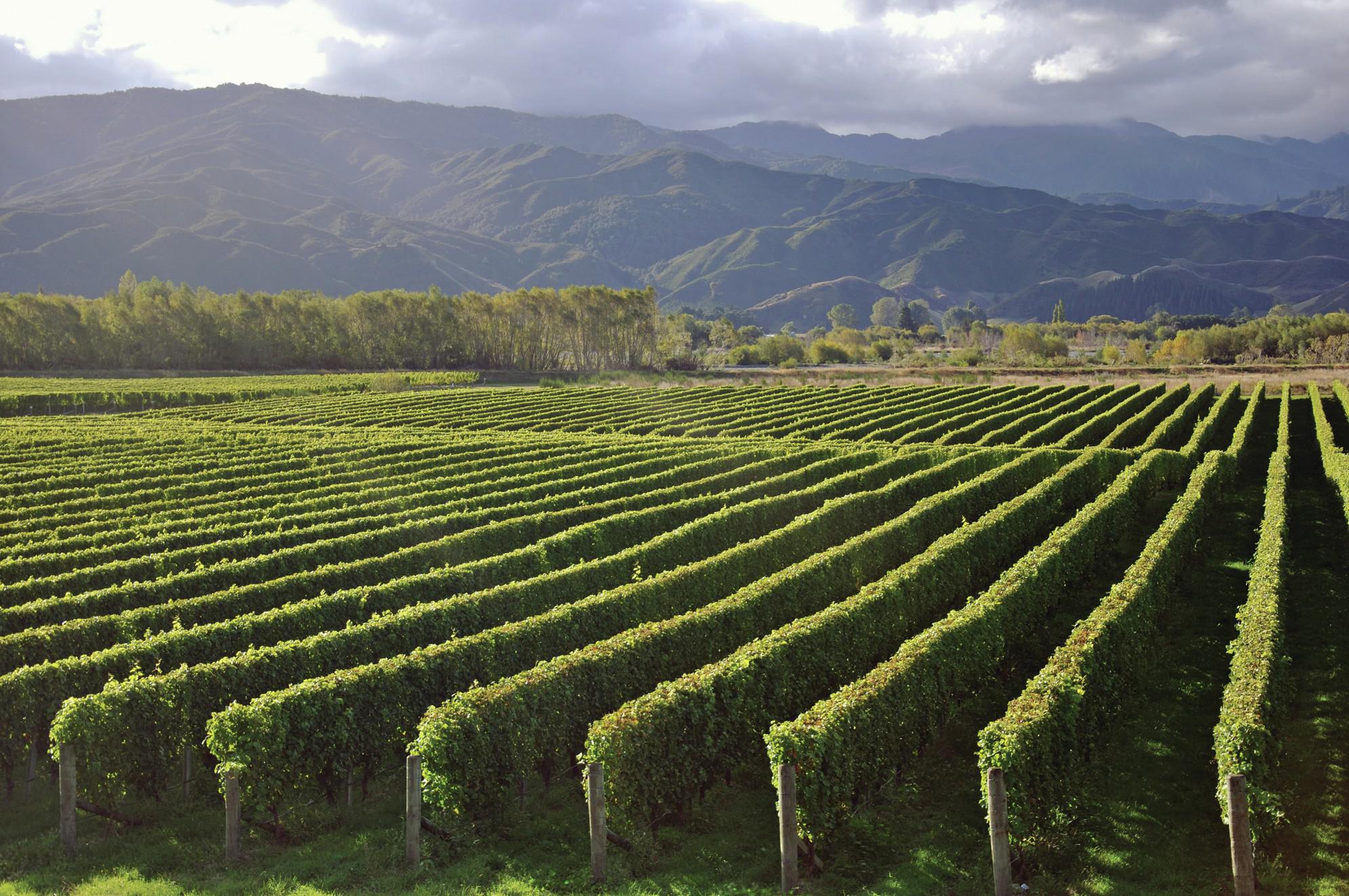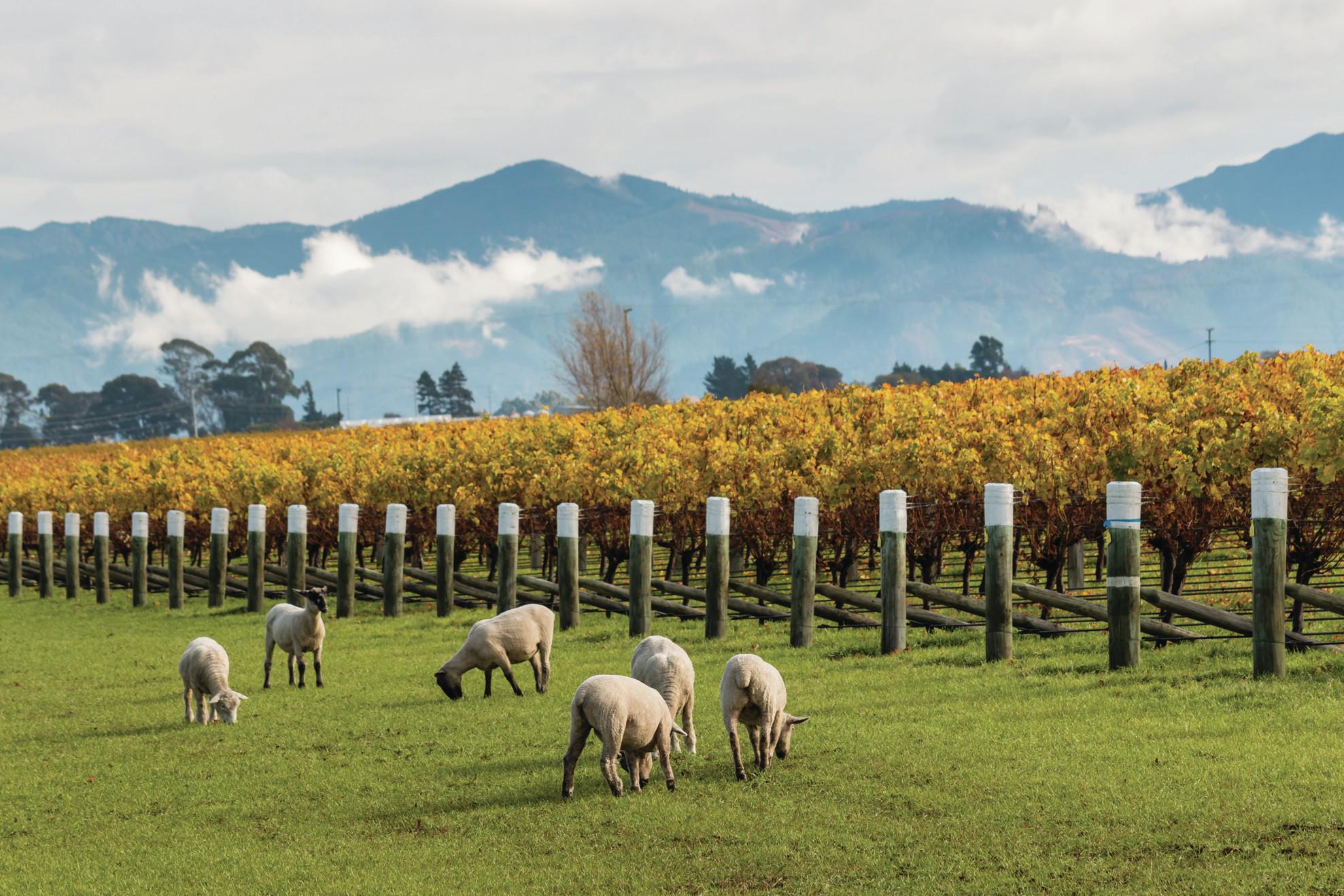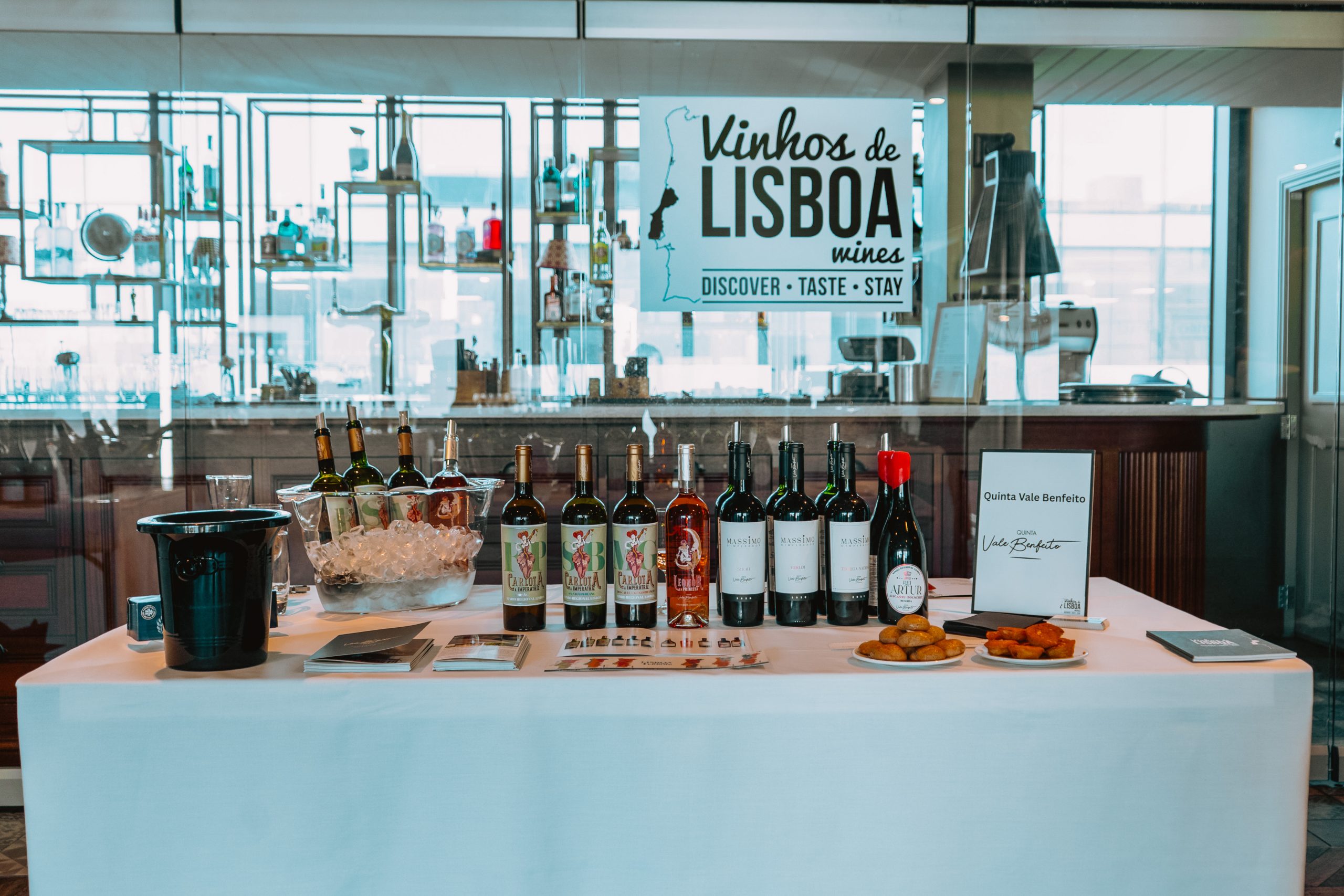The Big Interview: Philip Gregan, CEO, New Zealand Winegrowers
With this year marking the 50th anniversary of commercial plantings in Marlborough, Philip Gregan, CEO of New Zealand Winegrowers, talks record-breaking exports, and breezing through the energy crisis with Sarah Neish.

By anyone’s standards, streamlining logistical operations over the past 12 months has been about as fun as wading through treacle uphill wearing a fur coat, and with an acute treacle intolerance.
And while no one in the trade has been immune to the challenges, few have had to ship their goods quite as far as have New Zealand wine producers.
With the country’s top-two wine export markets (the US and UK respectively) located around 6,000 and 10,000 nautical miles away from source, connecting the dots to get wine in the hands of consumers has been a Herculean feat.
“Shipping in particular has caused real problems, whether that be ships not turning up or ships that have sailed but without taking containers on board,” says Philip Gregan, CEO of New Zealand Winegrowers, the industry body that represents the country’s winemakers. “These issues around logistics and reliability still endure, but I’m on a group sit-up with the government to try to tackle them.”
The struggle to get wine on ships makes it all the more impressive that New Zealand is on track to hit a recordbreaking NZ$2.4 billion (£1.25bn) worth of wine exports for June Year End 2023. Current exports amount to NZ$2.26bn for the 2022 calendar year to December.
“From vintage 2022 we started to see a rebound, and now that we’ve got wines back on shelves, we’re selling at compelling rates, and faster,” says Gregan.
In fact, the rate of sale for New Zealand white wine is up by 2.3% on 2021, which bucks the wider market trend.
The equivalent rate of sale for white wine from France, for example, is down by 13% (in the six weeks to 14 January 2023), and for white wines from Chile and South Africa it fell by 1.2% and 3.5% respectively.
New Zealand coming up trumps in this department has much to do with the insatiable demand for Marlborough Sauvignon Blanc, and the tenacity of the country’s winemakers in producing at volume while maintaining quality and holding fast on premium prices.
But there has been another saving grace for Kiwi wineries during the past year.
SUSTAINABLE PIONEERS
With New Zealand producers having been early pioneers of sustainable viticulture, a large chunk of the country’s wine industry is, and has been for some time, run on renewable energy. So when Putin marched his troops into Ukraine, effectively kiboshing energy supplies, New Zealand was already one step ahead.
“Around 80% of our energy is generated from renewable sources, whether that be hydro energy, geothermal, or wind. We’ve had that in place since long before the 2000s, and it’s stood us in good stead for withstanding soaring energy costs,” says Gregan, who lets out a low whistle when asked how differently things might have looked had winemakers been crippled by rocketing energy costs, on top of having to contend with logistical acrobatics, all while recovering from the country’s infamous short 2021 harvest, which saw yields down by 19%.
He explains that New Zealand’s early decision to go green, long before consumers and the industry demanded it, was in fact born out of necessity.
“We didn’t have a lot of oil, and we’re an island nation, situated more than 2,000km from anywhere else. So we needed to use what was readily available to us. We have volcanoes, so we can produce a lot of geothermal energy, and we get a lot of westerly winds in New Zealand, so wind turbines were an obvious solution.”

The nation’s wine industry has never been one to shy away from taking risks. This year will mark 50 years since the first commercial plantings went into the ground in Marlborough, a turning point that would come to transform the country’s economy.
”If you’d asked winemakers in 1971 what groundbreaking thing might occur in the next two years that would lead to NZ$2.4bn worth of exports, I’m pretty sure no one would have said it would be planting grapes in Marlborough,” says Gregan. “The view back then was that it was too cold in the South Island to grow grapes.”
Today, Marlborough represents 71% of the country’s plantings, according to New Zealand Wine.
For Gregan, however, Marlborough’s steadfast sales aren’t a passport to complacency, and he is looking firmly to the future.
“It’s important to view where we’re at now as being the beginning,” he says. “We don’t want to get too caught up in where we’ve come from. Wineries have got to continue to innovate.” One thing likely to help with that innovation is getting the long-awaited free-trade deal with the UK across the line, which is expected to happen in 2023. “It will hopefully come into play at some point this year. New Zealand government officials say that it’s all on track but there have been one or two changes to the UK government over the last eight months,” says Gregan with a wry smile.
“There’s nothing that will prevent the deal from coming into force, it’s just a question of getting it through the regulatory framework.”
When the deal does come to fruition, Gregan believes it will be a “real step forward” for both countries. But how exactly will the deal change things for winemakers on the ground?
Partner Content
“It’s going to make it a lot easier for New Zealand producers to export to the UK. VI1 forms have gone, thankfully, but perhaps more importantly, the deal will allow for more modern and flexible winemaking,” he says.
“Rather than be subject to strict EU rules, the free-trade deal means our winemakers will have access to a more ‘normal’ range of winemaking techniques.”
Describing current EU law as “not precisely like wearing a straightjacket, but not far off it”, Gregan is excited to see what the loosening of rules could conjure up when it comes to wine in the bottle.
“When we make wine to sell to the US, for example, we make it in exactly the same way as we would to sell to our domestic market. But until now that has not been the case for the UK,” he explains.
“The deal means that producers will be able to make wine in a way that suits them and which corresponds to the seasons rather than having to follow a restrictive protocol with regards to things like acidification and de-acidification.”
He is keen to point out that as a relatively young wine-producing country, New Zealand winemakers are to some extent still in the ‘suck it and see’ phase.
“We don’t have 400 or 500 years of experience in the industry,” he highlights. ”We’re still learning, and when you’re learning you need to be able to experiment and try different ways of doing things.”

THREE PILLARS
With the 50th anniversary of Marlborough grape plantings just around the corner, the moment seemed ripe for a wider refresh of ‘brand New Zealand’.
After carrying out extensive market research, New Zealand Winemakers revealed its new tagline – Altogether Unique – in January, in a bid to determine how the world will see its producers for the next 50 years or more. “The idea was to go beyond our commonly used differentiators, and develop a narrative around how the New Zealand wine brand should make you feel,” says Gregan. “The likes of Chile and Argentina were all saying the same thing – “Our wines are premium, they’re sustainable” and so on. We needed to drill down to a deeper level to define what sets New Zealand wine apart from our rivals.”
The organisation’s three new pillars of ‘purity, care, and innovation’ were born from the feedback winemakers receive about their products. “The purity refers to our unblemished sunlight, unpolluted environment and fresh, clear water,” says Gregan. “Care denotes the fact that our producers are cultivating grapes sustainably and with a connection to the land. Innovation is a nod to the sense of adventure that underpins our industry.”
While no harm can come from strengthening consumer perception of New Zealand wine, in truth it seldom needs it. Wineries worldwide are already intent on mimicking the country’s success, which comes with its own set of complications. Gregan, who adheres to the adage that “imitation is the finest form of flattery”, has nonetheless had to “strongly oppose” numerous trademark registrations for products because they are “blatantly ripping off New Zealand”. “We’ve seen a lot of products from other countries that look like or use words associated with New Zealand wine,” he explains, before flagging one French wine that goes by the name Kiwi Cuvée and a “major US retailer” that features the traditional Maori greeting ‘kia ora’ on its Sauvignon bottle as examples. In the case of the latter, “It’s a Sauvignon Blanc, but not from anywhere near New Zealand,” Gregan says archly.

Despite the lingering threat of identity fraud the only thing that has managed to dent sales of New Zealand wines during the past decade was the worryingly short harvest that the country’s winemakers experienced in 2021.
Is this behind them now or are producers still experiencing the fallout?
“To a large extent we’re out the other side but producers had to make really tough decisions about who and what they supplied,” says Gregan. “Half the problem was that the short harvest was so unexpected, especially in the context of the huge surplus of demand we were seeing at the time. What it has done is got people thinking about resilience. People had to rebuild stocks and relationships, and some are still doing so.”
While 2022 was effectively a year of recovery, the 2023 harvest looks to be shaping up nicely. “The first grapes have been harvested, and we’re expecting to finish picking in late April or early May,” says Gregan. “All indications so far are for a normal-sized crop. We’re certainly not expecting a 2021 situation. But we should have more definitive figures at the start of June.”
Looking ahead to the remainder of this year, protecting the reputation of New Zealand wine both on a global and local scale is top of his agenda.
On the world stage, Gregan is looking forward to the country hosting the next Cool Climate Wine Symposium in January 2026. “New Zealand Society for Viticulture and Oenology is working through the programme now and how it’s going to work,” says Gregan. “All eyes will be on our country, with viticulturalists, winemakers and researchers coming to New Zealand, so it’s a great opportunity for us to showcase what we’ve been working on to an interested and passionate community.”
LOCAL SUPPORT
And what about closer to home? With wine and wine tourism playing such a key role in New Zealand’s fortunes, Gregan is keen for producers to maintain their social currency in local communities.
Writing for Rural News Group earlier this year, he said: “We need to ensure that our sector retains its social licence to operate. In other words – we need to ensure that our producers are valued by their local communities as an asset worth keeping and protecting.”
One thing producers can do to keep this social currency alive as New Zealand wine enters its next chapter is to listen to any concerns.
“Vineyards are noisy places. They have tractors going at all hours of the day, helicopters for frost control, wind machines, bird bangers (a noise device that scares birds away from vines), and we absolutely need to do all this if we’re going to produce the quality that our markets demand, but we also need our communities to continue to allow us to do that,” Gregan says.
“Wineries must stick by the rules, and if they get a complaint, then act on it fast. We’re in a privileged position so we have to be cleaner than clean,” he adds.
“People are proud of our wine industry and we want to make sure that pride is there for many years to come.”
Related news
'Using helicopters would have crippled us financially'
Trinity Hill taps into rising demand for white wines in Asia




